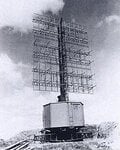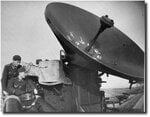German Air Ship Graf Zeppelin
LZ 130 Graf Zeppelin [II], the Hindenburg's sister, not the original globe trotting LZ 127 Graf Zeppelin.
Of course the Germans knew about the radar, the debate has never been whether or not they knew about it, but their understanding of how it interlinked within the British defences. The Chain Home system for all its faults was the very first radar integrated air defence system and the Germans failed to understand how it worked, as you surmised in your last sentence, Koopernic.
LZ 130 was operated by Deutsches Luft Reederei (DLR), a civilian airline and was contracted by the RLM to carry out the reconnaissance flight. From late 1938 the airship carried out secret radio experiments involving centimetre band AM radio waves and radio specialists were carried aboard to measure resulting radio frequencies. These measured foreign radio signals across mainland Europe. The flight of 2 - 4 August 1939 over Britain was a failure. Here's information from the wiki page on the ship, which is surprisingly detailed and examines each of the airship's total flights.
"The "espionage trip" of 2 to 4 August 1939, taking over 48 hours and covering 4,203 km (2,612 mi), was the longest trip the LZ 130 made. The main goal was to secretly collect information on the British Chain Home radar system.[8] To do this the airship flew northwards close to the British east coast to the Shetland Isles and back. As well as the 45 crew, 28 personnel engaged in the measurements were carried. Lifting off was around 20:53 on 2 August 1939, it overflew Hildesheim at 23:38, seen by very few people.[8]
According to the memoirs of Albert Sammt, Mein Leben für den Zeppelin (translation: "My life for the zeppelin") in the chapter Mit LZ 130 Graf Zeppelin auf Funkhorch- und Funkortungsfahrt ("with the LZ 130 Graf Zeppelin on the radio-listening and radiolocation trip") written by Breuning, a radio-measuring spy basket was used. Sammt flew the LZ 130 up Britain's east coast stopping the engines at Aberdeen pretending they had engine failure in order to investigate strange antenna masts. They drifted freely westwards over land and according to Breuning, saw for the first time the new Supermarine Spitfires, which were then photographed as they circled the airship.[7] This alleged encounter with Spitfires is not supported by contemporary news sources, which state that the LZ 130 was intercepted by two RAF planes dispatched from Dyce Airport, a Miles Magister carrying 612 Squadron Leader Finlay Crerar and Officer Robinson, and an Avro Anson.[9]
On their return journey, as they neared Frankfurt on the evening of 4 August they were warned by radio that landing was not yet possible. At first they suspected an aeroplane had crashed at the site, but on overflying saw nothing amiss. They turned and flew towards the Rhön Mountains and on asking, were informed "landing before dusk not possible". They decided to return to Frankfurt and speak directly with the landing team (Landemannschaft) using their very high frequency transmitter, so that they would not be overheard by the French and so that they could speak in Swabian German to Beurle, the landing team leader.[7]
According to Breuning's account, Beurle informed them they must not land yet because the British had lodged a diplomatic protest over their actions and a British delegation was at the airfield, with agreement of the German government, to inspect the ship. They were under suspicion. Beurle told them to wait while they thought of something.[7] Shortly, the LZ 130 received instructions. They were to hide all the equipment on the ship and not to land at the usual well-lit landing point where a landing team was waiting, but to land at the other end where the "real" landing team was waiting. Once they had landed there, the technicians were to get off and they would be replaced by a unit of Sturmabteilung. The British delegation waiting at the usual landing place were told that, due to the weather, the airship had to land at another part of the airfield. By the time the British reached the airship, the spy crew was on a bus on their way to their hotel. Although they searched the ship, the British found nothing suspicious on the ship nor in the decoy SA-crew.[7] Breuning's account has been questioned; there is no official record of the British filing a diplomatic protest.[5]
Breuning explained that the trip's results were negative, but not because the British radar was switched off, as Churchill wrote in his memoirs. The German General Wolfgang Martini used a strong, impulsive, broadband radio transmission for determining the "radio-weather", the best wavelengths to use for radio. These impulses severely disturbed their highly sensitive receivers in the 10–12 metre waveband. Breuning wrote that he repeatedly requested Martini to stop transmitting during the spy trips, to no avail. This made it impossible for the LZ 130 to investigate the very wavebands the British were using.[7]"
LZ 130 Graf Zeppelin II - Wikipedia


